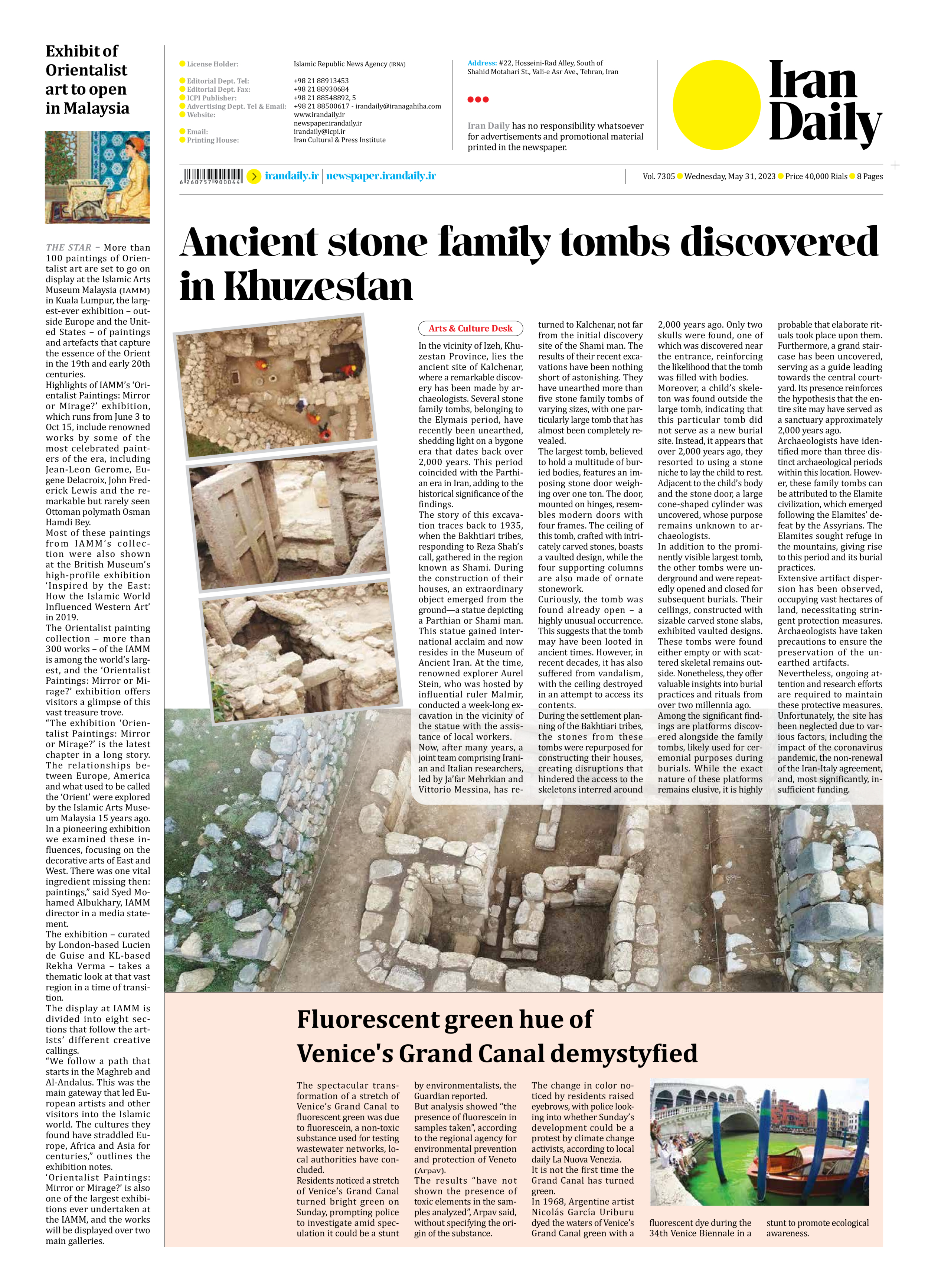
Ancient stone family tombs discovered in Khuzestan
In the vicinity of Izeh, Khuzestan Province, lies the ancient site of Kalchenar, where a remarkable discovery has been made by archaeologists. Several stone family tombs, belonging to the Elymais period, have recently been unearthed, shedding light on a bygone era that dates back over 2,000 years. This period coincided with the Parthian era in Iran, adding to the historical significance of the findings.
The story of this excavation traces back to 1935, when the Bakhtiari tribes, responding to Reza Shah’s call, gathered in the region known as Shami. During the construction of their houses, an extraordinary object emerged from the ground—a statue depicting a Parthian or Shami man. This statue gained international acclaim and now resides in the Museum of Ancient Iran. At the time, renowned explorer Aurel Stein, who was hosted by influential ruler Malmir, conducted a week-long excavation in the vicinity of the statue with the assistance of local workers.
Now, after many years, a joint team comprising Iranian and Italian researchers, led by Ja’far Mehrkian and Vittorio Messina, has returned to Kalchenar, not far from the initial discovery site of the Shami man. The results of their recent excavations have been nothing short of astonishing. They have unearthed more than five stone family tombs of varying sizes, with one particularly large tomb that has almost been completely revealed.
The largest tomb, believed to hold a multitude of buried bodies, features an imposing stone door weighing over one ton. The door, mounted on hinges, resembles modern doors with four frames. The ceiling of this tomb, crafted with intricately carved stones, boasts a vaulted design, while the four supporting columns are also made of ornate stonework.
Curiously, the tomb was found already open – a highly unusual occurrence. This suggests that the tomb may have been looted in ancient times. However, in recent decades, it has also suffered from vandalism, with the ceiling destroyed in an attempt to access its contents.
During the settlement planning of the Bakhtiari tribes, the stones from these tombs were repurposed for constructing their houses, creating disruptions that hindered the access to the skeletons interred around 2,000 years ago. Only two skulls were found, one of which was discovered near the entrance, reinforcing the likelihood that the tomb was filled with bodies.
Moreover, a child’s skeleton was found outside the large tomb, indicating that this particular tomb did not serve as a new burial site. Instead, it appears that over 2,000 years ago, they resorted to using a stone niche to lay the child to rest. Adjacent to the child’s body and the stone door, a large cone-shaped cylinder was uncovered, whose purpose remains unknown to archaeologists.
In addition to the prominently visible largest tomb, the other tombs were underground and were repeatedly opened and closed for subsequent burials. Their ceilings, constructed with sizable carved stone slabs, exhibited vaulted designs. These tombs were found either empty or with scattered skeletal remains outside. Nonetheless, they offer valuable insights into burial practices and rituals from over two millennia ago.
Among the significant findings are platforms discovered alongside the family tombs, likely used for ceremonial purposes during burials. While the exact nature of these platforms remains elusive, it is highly probable that elaborate rituals took place upon them.
Furthermore, a grand staircase has been uncovered, serving as a guide leading towards the central courtyard. Its presence reinforces the hypothesis that the entire site may have served as a sanctuary approximately 2,000 years ago.
Archaeologists have identified more than three distinct archaeological periods within this location. However, these family tombs can be attributed to the Elamite civilization, which emerged following the Elamites’ defeat by the Assyrians. The Elamites sought refuge in the mountains, giving rise to this period and its burial practices.
Extensive artifact dispersion has been observed, occupying vast hectares of land, necessitating stringent protection measures. Archaeologists have taken precautions to ensure the preservation of the unearthed artifacts.
Nevertheless, ongoing attention and research efforts are required to maintain these protective measures. Unfortunately, the site has been neglected due to various factors, including the impact of the coronavirus pandemic, the non-renewal of the Iran-Italy agreement, and, most significantly, insufficient funding.







